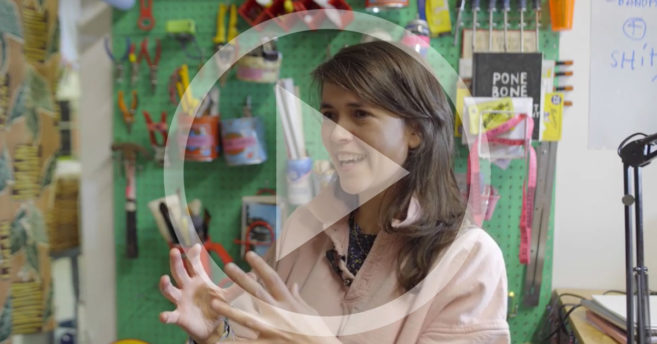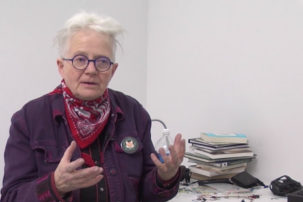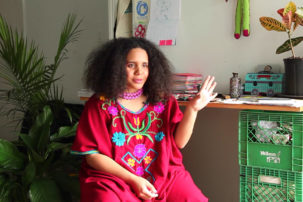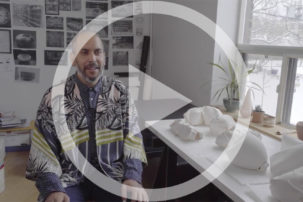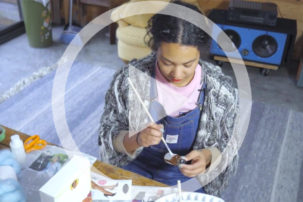I first came across Tau Lewis’s sculptures on Instagram, where it felt like most of Toronto was photographing her recent solo exhibition “foraged, ain’t free” at Studio 223a. Her works, which combined cast figural sculptures, found objects and plants, were arresting. But Lewis maintains a healthy skepticism towards this type of engagement with art, considering a quick scroll and a Like to be a relatively superficial form of engagement—especially undesirable given Lewis’s focus on black identity and careful attention to symbolism.
“The cacti probably has the most symbolism in my work. I frequently use cacti to talk about diaspora and black identity,” says Lewis. “They’re tropical plants that come from super-hot climates and they’ve been super-domesticated and they can survive anywhere in the world. And they also grow really prickly spines that act as preservation tactics.”
In the Studio with Tau Lewis by Brittany Shepherd from Canadian Art on Vimeo.
Lewis is 23 and self-taught. She’s a talented writer, but hated journalism school, and left it to focus on art instead. Lewis began showing in Toronto, and, in the last two years has had exhibitions at galleries including Katzman Contemporary, YTB Gallery, Edward Day Gallery and Sleep Center in New York. She will start 2017 in much the same way with a showing at 8-11.
Her Niagara Street studio, a shared underground space in a building full of artists who are under threat from imminent construction, is filled with past pieces from these works. But it’s getting a little too small for Lewis’s outsized ambitions—she wants to start working big. The places she works and lives in deeply affect her work. “Right now my practice is very much dependent on my environment, and I’ll use what’s available to me,” says Lewis. “So certain pieces I feel resonate with me much more and feel much more honest because they’re the pieces that I’ve created when I’ve run out of money, when I have no materials left. And so I literally go out and find things, and it’ll sort of force itself into creation that way.”
See the results of this approach in this studio-visit video by Canadian Art’s video intern, Brittany Shepherd.

